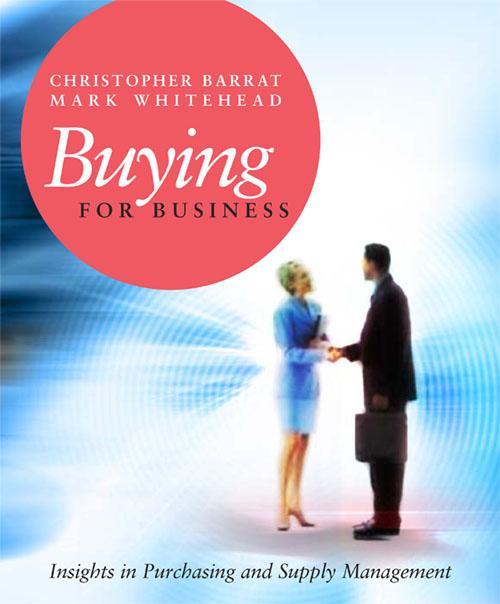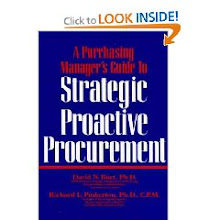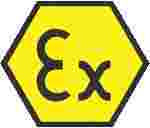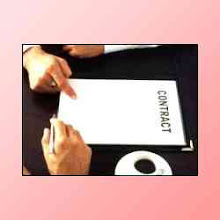buying techniques
techniques, tips and rules for professional buyers, purchasing and supplies management - a strategic approach to buying
Effective purchasing management and professional buying works better when a good strategic framework exists. Commonly, relationships between suppliers and customers are driven by personalities, or the needs of the moment, whereas relationships and purchasing strategy should ideally be based on a combination of factors reflecting the nature of each purchasing area, including: risk, complexity, value, the market and basic matters of supply and demand. This simple article explains some of the principles, techniques and guidelines for buying, and is provided by Christopher Barrat, a writer on the subject of professional buying, whose contribution is gratefully acknowledged.
Bear in mind also that when buying anything you should be aware of the principles and techniques of effective negotiation. It is likely that the person selling to you will be using them, so even if you do not wish to adopt the approach and methods concerned, it's as well that you be able to recognise the tactics.
1. CHECK YOU KNOW WHERE YOUR PURCHASE IS POSITIONED
Every buyer wants the maximum choice of compliant suppliers. This is a rare occurrence. Buying is often involved late, given specifications that are too tight, or not enough information to allow flexibility. The classic 'power matrix' always helps to assess how to engage suppliers:
BUYING RELATIONSHIPS MATRIX
| low item value, product complexity, buyer strength | high item value, product complexity, buyer strength |
|---|
| highmarket complexity, risk, supplier strength | Critical yetinfrequent contract negotiations, which is the challenge.
Can be difficult to attract and maintain priority and attention from suppliers, so buyers need to find ways to maximise theappeal and interestfor the supplier.
Buyers therefore need to be creative, pragmatic and adaptable, so as to find ways of increasing the appeal and priority for the supplier.
The likelihood is thatcontracts will be more important than relationships, due to the difficulty in sustaining senior level interest from the supplier. | Develop and maintain strategic alliances or partnerships with sustainable high-quality strategic suppliers.
Ongoing collaboration and revieware essential.
Relationships are likely to be more important than contracts.
Multiple relationships between buyer and seller organizations are likely to be very beneficial, and should be encouraged and enabled between as many counterpart levels and functions as necessary to attain mutual understanding of operational issues and implications for both sides.
Investment in 'coaching' suppliersto improve their strategic partnering capabilities can be worthwhile. |
|---|
| low market complexity, risk, supplier strength | Often involves'commoditised' products and services.
Generally try toautomate arrangements and processes, so as toreduce transaction costs, variability and amount of time and effort required to maintain supply and renegotiations.
Establish efficient processes. Minimise time and activity for both sides. | Buyers have extensive choicebecause of the number of suppliers available and the competition between them.
Buyers can exercise volume leverage to get the best deals.
More aggressive buying tacticsare acceptable and you shouldswap between the many undifferentiated yet adequate suppliers. |
|---|
The important step is to remember that even if you have little information, it doesn't actually effect where the real market pressures are. In other words let the market decide their position, not your lack of knowledge.
2. GET INVOLVED WITH YOUR SALES PEOPLE
Buying is a critical function. Despite this for many years it has been regarded somewhat as a second class citizen in the commercial rankings. If, as a buyer, you can get involved with your own sales people this will make a difference. Firstly you could consider running training courses for them. Secondly see if they can get you to one of their key customers to talk to their buyers - it establishes good relations and can facilitate product development.
3. SEGMENT YOUR STAFF
Buying covers a very wide spectrum. Strategic sourcing at one end, and invoice entering at the other. This is a broad skill set, and not all buyers can do both. If you want to develop your buyers skills then start by really checking who is capable, and or willing. Some of your best staff may not actually want to be developed into strategic relationship managers. If you need to sell your department better internally - then pick your best presenter to do this, not simply the buyer who deals with that group.
4. REPETITION IS THE KEY TO SUPPLIER MEASUREMENT
There are probably more supplier measurement processes than there are suppliers. Everyone is constantly inventing and re-inventing some set of magic criteria that will measure supplier performance, and now of course the trend is to make it all 'e-capable' and self managing. Don't get tempted down this path. All of the processes do basically the same thing - ie., get a series of aspects of supply and give you some sort of rating on a scale between 'hero' and 'plonker'. The key to success is to stick with the same simple measure - and do it over time. It is by definition going to be a relative movement that you want to see, not an absolute one. Only if you repeat the same process time and time again is this possible.
5. SUPPLIER RATIONALIZATION - AN ENDS OR A MEANS?
Any self respecting buyer has gone through some sort of supplier rationalization programme. It probably makes up one of your objectives and probably has a firm number - eg 'reduce supplier base to 300 suppliers'. Beware these sorts of targets - why 300? Why not 307 or 289? The issues is that this target loses sight of the reason for reduction - ie., you want to simplify processes, increase supplier dependency and therefore reduce costs. However everyone also knows that if you reduce too far you become locked into certain suppliers and prices can rise. What is more if you are going to go down an 'e-auction' route your first step may well be to increase the amount of suppliers. Rather than set an arbitrary number for suppliers, focus on the outcome - reducing costs - and see if this one particular tool is useful or not.
6. PRICE VERSUS COST - UNDERSTANDING AND CALCULATING ACTUAL TOTAL COST
Price is different from cost. The terms are often interchanged in business, which can lead to confusion in negotiations, and wrong decisions based on 'false economy'. The key rule is that 'price' is only one of the elements that makes up 'cost'. There are many other factors to consider and factor into the overall value judgement, and whether one proposition or supply arrangement is truly better than another.
actual total cost
| price = basic cost of product or service | £/$ |
| value = cost of quality (including maintenance, disposal, and costs relating to environmental and corporate social responsibility factors) | £/$ |
| transaction = cost of acquisition (including buying resources, effort, time, payment terms, change management, training related to implementation) | £/$ |
| actual total cost | £/$ |
See the Actual Total Cost diagram in MSPowerpoint or as an Acrobat pdf.
The price is the label on the packet, or the basic price of the product or service, but it is no indication of true value or cost. For example, a chair has a price tag on it of £10 or $20. The value however, is related to useable benefits that the chair gives, and the cost implications of using it for its intended purpose. It may be a very cheaply-made chair, in which case if its role is just to last one season in a rented holiday flat and then be thrown away, then that is fine. If however the chair is required for visitors in the reception of high quality business, then its style, comfort and durability are important required features, and therefore form a real part of its value (or not as the case may be). So in this instance a chair is likely to warrant a relatively high 'price' in order to provide the necessary value and benefits, which ultimately produce a significantly lower 'actual total cost' than paying a low price for an inferior product which fails to perform, endure, give a suitable impression, etc. The CEO of a potential $20m client who sits in a $20 reception chair might decide after all that he doesn't want to place his business with a company who put such a low value on its visitors. What's the actual total cost of the $20 chair then?...
NB the term 'added value' is used a lot in business today. Often it is just a smokescreen for a price increase so be aware. To really add value any feature should have some real and tangible effect on the longer term use/replacement value/cost of transaction/reputation for the buyer's business. When confronted with claims of added value, ask, 'exactly what is the the added value?' By the same token, if you use the term 'added value' when selling to a buyer, make sure you can demonstrate it.
The cost of the transaction is what it actually costs your organization to do the deal (and also to review it and renegotiate it in months and years to come). Costs of transaction are regularly overlooked - by buyers and sellers alike, and everyone else who thinks that selling and buying are all about price. For example professional buyers often receive suggestions from users or staff who say they can buy cheaper copier paper from their local discount store. They ignore the cost of the transaction - that to purchase the cheaper paper from a local store involves someone spending time to go there, with cost of travel, the time to complete and fulfil an expense claim - all of which mean the cost of the transaction far outweighs any initially apparent 'price' savings.
Consider also the cost of change, implementation and training. These are also costs of the transaction, and can be enormous - in some cases greater than the basic price of the product or service. IT hardware and software are notable examples where the costs of executing the transaction through to implementation can produce frightening implications for costs, and also for process integrity and continuity.
An increasingly relevant factor is 'total cost of ownership' (TOC or TCO). Total cost of ownership includes all of the factors above, but will also consider costs of disposal, and increasingly for all industries, the cost of reputation - for example the effect that sourcing low priced third-world goods can have on an organization's reputation - notably its reputation for Corporate Social Responsibility (CSR).
In summary, whether buying or selling, price is only a part of theactual total cost. Costs of quality including maintenance, disposal, CSR (corporate social responsibility) and environmental factors, and costs of the transaction including buying resources, effort, time, payment terms, and renegotiations (all largely dictated by the seller’s relationship capabilities) must all be be considered when assessing or comparing the actual total costs of propositions, products or services.
Christopher Barrat, contributor of this article, is co-author of this recent book about modern purchasing management and professional buying.
BUYING FOR BUSINESS - CHRISTOPHER BARRAT & MARK WHITEHEADChristopher Barrat is co-author of this accessible and clear book explaining strategic buying, supply and purchasing management principles, techniques and modern methods. |  |
see also
search businessballs website
browse categories
- business/selling
sales, marketing, strategy, business management - glossaries/terminology
glossaries, dictionaries, acronyms, lists of terms - human resources
recruitment and selection, training, job interviews - teambuilding/games
activities, games, icebreakers, quizzes, puzzles - lifestyle/environment
climate change, sleeping aids, reiki
| - amusement/stress relief
funny and inspirational stories, quotes, humour - personal development
personal development, self-discovery, self-help, life balance - leadership/management
delegation, motivation, change management - writing/communicating
cv templates, reference letters, resignation letters - diagrams and tools
free templates, samples, resources, tests and quizzes
|
The use of this material is free provided copyright (see below) is acknowledged and reference or link is made to the www.businessballs.com website. This material may not be sold, or published in any form. Disclaimer: Reliance on information, material, advice, or other linked or recommended resources, received from Alan Chapman, shall be at your sole risk, and Alan Chapman assumes no responsibility for any errors, omissions, or damages arising. Users of this website are encouraged to confirm information received with other sources, and to seek local qualified advice if embarking on any actions that could carry personal or organizational liabilities. Managing people and relationships are sensitive activities; the free material and advice available via this website do not provide all necessary safeguards and checks. Please retain this notice on all copies.
© 2004-2009 Christopher Barrat technical buying content, Alan Chapman edit, contextual content, and adaptation of Buying Relationships Matrix 2004-2009.

 source
source








